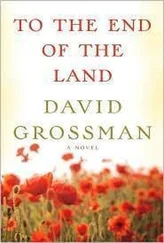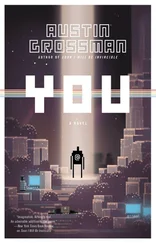The 1978 President’s Commission on Mental Health tells us that approximately 2.8 million Americans served in Southeast Asia. If we accept the Veterans Administration’s conservative figures of 15 percent incidence of PTSD among Vietnam veterans, then more than 400,000 individuals in the United States suffer from PTSD. Independent estimates of the number of Vietnam veterans suffering from PTSD range from the Disabled American Veterans figure of 500,000 to Harris and Associates 1980 estimate of 1.5 million. These figures would mean that somewhere between 18 and 54 percent of the 2.8 million military personnel who served in Vietnam are suffering from PTSD.
This improvement is so astounding that a few modern observers have publicly questioned Marshall’s World War II findings. But to do that means that you have to go on and question his Korean War findings and his Vietnam findings (which have been independently verified by Scott). To do so also refutes the findings of every other author who has looked deeply into this matter, including Holmes, Dyer, Keegan, and Griffith. It is possible these modern writers are partially motivated by a difficulty in believing that they and “their” soldiers exist to do something that is so offensive and horrible that they must be conditioned to do it. See the earlier section “Killing and the Existence of Resistance” for a more detailed discussion of this topic.
There was too little close combat in the Gulf War to really make any conclusions of this sort.
Stouffer, in “The American Soldier: Combat and Its Aftermath” (in Studies in Social Psychology in World War II, vol. 2), says that “Personal readjustment problems of varying degrees of intensity are disclosed by the [World War II] veterans in this study. But the typical veteran pictured in some quarters as a bitter, hardened individual does not emerge from this survey.” Charles C. Moskos Jr., in The American Enlisted Man, looked at the Vietnam veteran and found that, compared with when they entered the army, these men returned to civilian life more mature and better suited to contribute to society.
The situation, however, is not all that simple. Since Stouffer’s and Moskos’s studies, we have become aware of the impact of PTSD on Vietnam veterans. It would appear there is no evidence to indicate that, when compared with a nonveteran of the same age, the average Vietnam vet has any greater potential for committing murder, assaults, or robbery. What the epidemic of PTSD among Vietnam vets has caused is a significant increase in suicides, drug use, alcoholism, and divorce.
See Gabriel’s No More Heroes for more information about these drugs and their physical and mental effects. Gabriel also spends a great deal of time assessing the potential impact of these drugs on killing and their potential effects on the trauma of killing. Those interested in a more detailed assessment of the impact of psychopharmacology in Vietnam should look at Military Psychiatry: A Comparative Perspective, which Gabriel edited and drew from extensively for No More Heroes.
No, the term is not necessarily an oxymoron.
Fry and Stockton (1982), Keane and Fairbank (1983), Strech (1985), Lifton (1974), Brown (1984), Egendorf, Kadushin, Laufer, Rothbart, and Sloan (1981), and Levetman (1978) are just a few of the psychiatrists, military psychologists, Veterans Administration mental-health professionals, and sociologists who have identified lack of social support after returning from combat as a critical factor in the development of PTSD.
Research is proceeding in this area, and we may someday be able to actually calibrate these numbers. In 1992, twelve cadets from the U.S. Military Academy at West Point spent their summer at the VA Medical Center in Boston. They were participating as part of their Individual Academic Development Program under my supervision, and their mission was to interview veterans about their combat experiences in order to begin to establish a database of information and interviews specifically about killing processes. The cadets involved then evaluated and assessed the data gathered in these summer interviews as a part of subsequent directed individual studies courses under my supervision.
This database continues to grow and will, hopefully, expand further based upon input from veterans as a result of this book. The long-term objective is to be able to begin a detailed analysis of the processes associated with killing, to include the degree of importance and influence represented by the various factors in the killing-enabling model; the validity of the killing response stages; and the interaction between combat trauma (specifically killing experiences) and social support and their relationship to the resulting magnitude of posttraumatic stress response. Individuals who are willing to provide data for this study are invited to write the author care of the publisher.
As mentioned before, Stouffer’s and Moskos’s studies indicate that returning veterans are generally better members of society. There is also no evidence to indicate that a Vietnam vet is more likely than a nonvet to commit crimes of violence. What the epidemic of PTSD among Vietnam vets has caused is a statistically significant increase in suicides, drug use, alcoholism, and divorce.
I should note that most Vietnam vets have done quite well for themselves. There is, therefore, a backlash movement among some Vietnam veterans who are tired of the current label, who have had no difficulty themselves (perhaps due to repression and denial, or an unusually strong support structure upon return combined with their own personal psychic strength in the face of the stresses that they have endured), and these individuals sometimes have little patience for the veterans who are having problems.
In the face of this current conflict among veterans I would contribute the observation that the world is big enough, and people are complex enough, that probably both sides are correct.
There is some confusion about crime reporting in America, generally due to the fact that there are two crime reports produced each year by the U.S. government. One report is compiled by the FBI based on all crimes reported by law-enforcement agencies across the nation. In recent years this report has reflected a steady decrease in overall crime and a steady increase in violent crime, as reflected in the graph on page 300.
In 1994 the FBI report reflected a 0.4 percent decrease in the per capita aggravated assault rate. This is the first decrease in this area in nearly a decade. But the same report also reflected a 2.2 percent increase in the per capita murder rate, and criminologists offer little hope for a long-term decrease in violent crime. “We haven’t even begun to see the problem with teenagers that we will see in the next ten years,” says Dr. Jack Levin, sociology and criminology professor at Northeastern University in Boston. “There will be a 23 percent increase in the teenage population over the next generation, and as a result, we’re going to see the murder rate rise precipitously.”
The other annual crime report is based on a national survey of crime victims and reports its findings according to the number of crimes per household. In recent years this report has also reflected a steady increase in violent crime. The results of this survey have been questioned by some experts, and it may be that this report is underreporting crime as the nature and number of American “households” increase due to the breakdown of the nuclear family. The data in this report also have potential for error (probably in the direction of underreporting), since they are based on a subjective assessment on the part of the increasingly jaded population being surveyed. Nevertheless, in 1994 this survey reflected a 5.6 percent increase in violent crime.
Читать дальше







